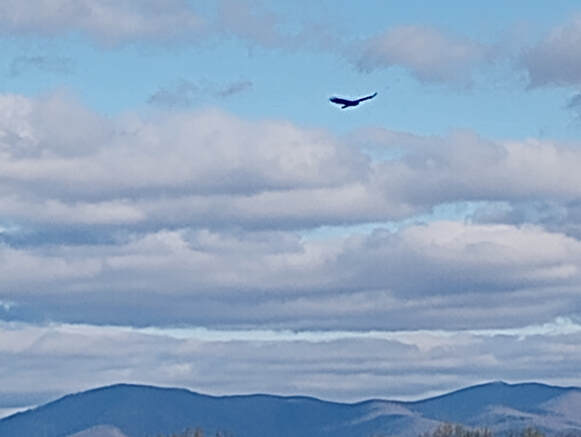 Turkey vulture (Cathartes aura); Photo: Charlene Uhl Turkey vulture (Cathartes aura); Photo: Charlene Uhl Sycamore Grove Farm, Madison County You have probably seen a turkey vulture (or two or three) on the side of the road, eating “road kill," AKA carrion. You might have also seen them soaring in the sky, looking for a meal. These birds and their cousins - the black vulture – play a very important role in the natural world. They truly are nature’s cleanup crew. On my daily bird walk, I don’t always see vultures. I wondered about this and then realized that they conserve energy by soaring. They rarely flap their wings. Since I walk fairly early in the morning, the air is often still. But on those mornings when the wind is up, I can count on seeing turkey vultures, who are taking advantage of the air thermals coming down from the mountains. They have extremely well-developed eyesight. As I researched them a little more, I was fascinated to learn that they first detect freshly rotting meat with their nose: they have been known to smell carrion from over a mile away. I also found out that our farm is the ideal habitat for vultures: they are found in relatively open areas (our hay field) near to woodlands, which are important for both nesting and roosting. But they’re certainly not limited to our farm in their daily search for food. Turkey vultures can travel up to 200 miles in a single day. While a vulture’s feet can’t be used to kill prey, like those of a hawk or eagle, their beaks are strong enough to rip through cowhide. But they like their meat fairly fresh. Apparently by the fourth day they will not feed on carrion because the meat is too rotten. So that’s why we’ll sometimes see a partially eaten carcass of a deer or other large animal alongside of the road. Guess that extraordinary sense of smell has another purpose! The Chattahoochee Nature Center has a fascinating web page on turkey vultures with even more information about their abilities. So when we see the cleanup crew at work, we can be thankful for the great job they are doing! Birding tip: Did you know that the five keys to bird ID are size, shape, color pattern, behavior and habitat. When you’re out birding, try to make it a practice to mentally recognize those five aspects of each bird you see. It very quickly becomes a habit and you’ll be able to identify a lot more birds – and know what birds to expect in the habitat you’re in. Happy birding! Charlene Uhl
0 Comments
Your comment will be posted after it is approved.
Leave a Reply. |
Have a blog or blog idea?
Let us know (click) Other Blogs
VA Native Plant Society - click Brenda Clement Jones - click John Muir Laws' Blog - click Megan's Nature Nook - click Categories
All
Archives
September 2023
Blog Administrator:
Kathleen A. VMN since 2018 |